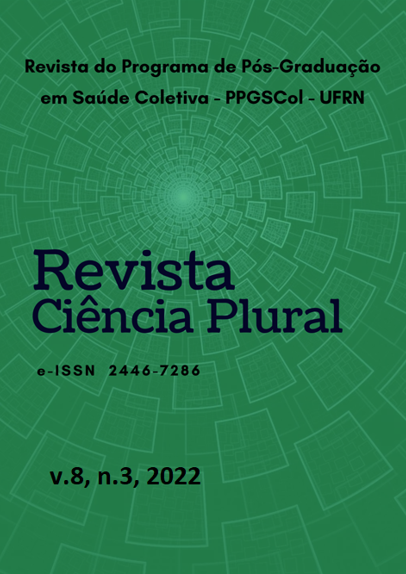Spatial analysis of mortality in children under five years of age in Brazil: social and health care indicators
DOI:
https://doi.org/10.21680/2446-7286.2022v8n3ID26740Abstract
Introduction: Infant mortality rates all over the world are configured as indicators of quality of life and health in a country, as this public has special vulnerabilities and needs, associated with the social and economic conditions available to the population. Therefore, it is extremely important to analyze infant mortality in Brazil and regions. Objective: Evaluate the spatialization of the mortality coefficient in children aged one to five years in Brazil and its social and health indicators.. Methodology: This is an ecological, temporal trend and spatial correlation study carried out in Brazil with the population of children aged 1 to 5 years, using information from the Mortality Information System (SIM/DATASUS). For the analysis, Microsoft Excel and Statistical Package for the Social Sciences software were used. TerraView was used to perform the mortality rate distribution and the spatial dependence was measured by Moran's global autocorrelation coefficient. Results: The average infant mortality rate for children aged between one and under five showed a decreasing profile in the period from 2008 to 2015. In 2016, however, a substantial increase in deaths in children in the age group studied was observed. The North and Northeast regions of Brazil had the highest mortality rates, while the states of the South and Southeast had fewer deaths for children between one and under five years of age. Conclusions: Despite the drop in childhood mortality rates over the years, there is still a long way to go in relation to the decrease in cases, especially in the North and Northeast regions of Brazil. Despite the pacts created by the government and the expansion of health services, specifically primary care, the high numbers of deaths in this age group can be related to the decrease in vaccination coverage, as well as to the high number of external factors.
Downloads
Downloads
Published
How to Cite
Issue
Section
License
Copyright (c) 2022 Revista Ciência Plural

This work is licensed under a Creative Commons Attribution-NonCommercial-ShareAlike 4.0 International License.
À Revista Ciência Plural ficam reservados os direitos autorais referente a todos os artigos publicados.

 Português (Brasil)
Português (Brasil) English
English Español (España)
Español (España)













